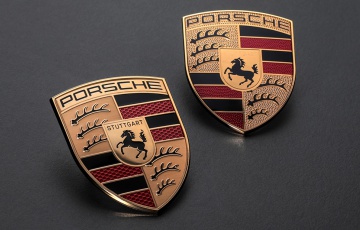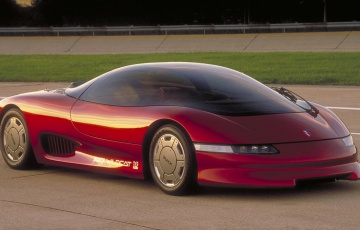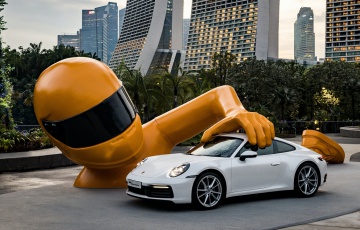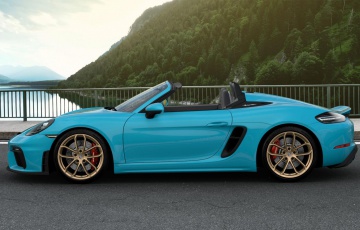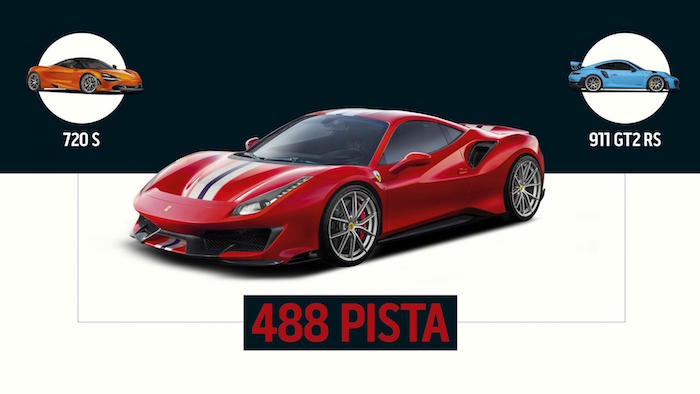
Yes, we know that a car is much more than the sum of its numbers; that how it does what it does is just as important as what it actually does.
Maybe even more important. But this isn’t about that. This is the new Ferrari 488 Pista (that’s Italian for track, so do stop sniggering), expressed in hard stats, numbers and data.
And then compared with its main competition – Porsche’s fearsome 911 GT2 RS, and the superlative McLaren 720S.
Why? Well, it’s much easier to win an argument when the raw numbers are on your side. And besides, when the numbers are this large (and ludicrous), there’s a perverse satisfaction in ruthlessly benchmarking them. So, without further ado, let’s dive in.
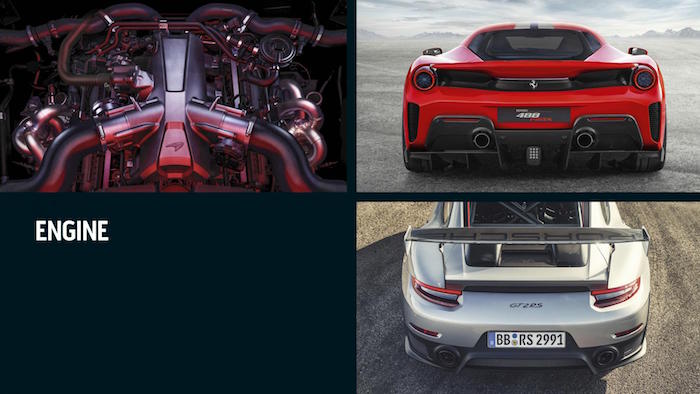
Engine
Well, they’re all turbocharged, as you’d expect from modern supercars in 2018. Weep and/or rejoice as you see fit. The upshot of this is that all have the sort of power that’d be mind-boggling just ten years ago, delivered in that ‘Powerband? What an antiquated notion’ way.
There’s a peak of 710bhp and 770Nm on offer in the McLaren, delivered from its twin-turbo, 4.0-litre V8. Its effects? Well, we’ll get to that. First, let’s get the other contenders in.
And, all of a sudden, the McLaren doesn’t have things all its own way, thanks to the 488 Pista’s upgraded 3.9-litre, twin-turbo V8. There’s a whole extra horsepower here; that’s 720hp, in case your maths isn’t the greatest.
We’re told the torque level-pegs with the McLaren at 770Nm, which does indicate (to us, at least), that this is a bit of a benchmark, taking road legality, fuel economy, emissions and warranties into account. Compare this, if you will, with the 570-odd horsepower benchmark of just nine years ago.
As for the Porsche? Well, the GT2 RS has always been a bit of a numbers car. If you’re not driving, you can marvel at the new one’s 700hp. If you are driving, your numbers quickly devolve into a motoring version of the DEFCON system. Suffice to say that it’s usually at DEFCON 1.
Yes, DEFCON 1 is the really serious one. It’s like golf, in that smaller numbers are more important. It is also wholly unlike golf, because lower numbers relate to imminent nuclear annihilation*.
And we’re fairly sure that, after experiencing the full 700hp for the first time, drivers have probably made certain allusions to atomic bombs.
Yes, the power is down on the Mac Daddy and the Off-Piste, as is the 750Nm of torque, but ask any of the white-knuckled test pilots if they noticed.
* Good news! We’ve never reached DEFCON 1, not even in the days of the Cuban Missile Crisis. So, y’know, hooray for us.
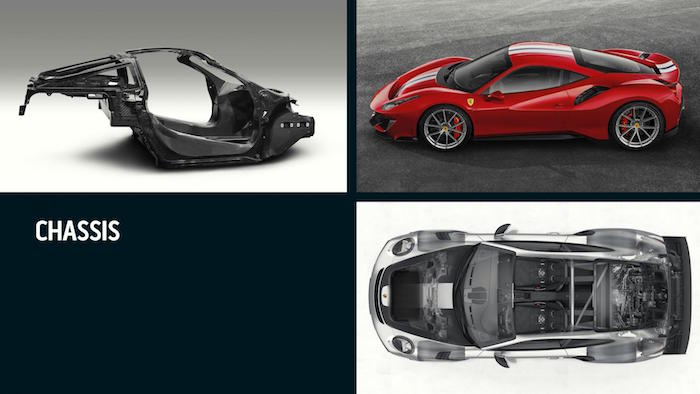
Chassis
Well, do you mean chassis as in the actual construction of the car, or the suspension bits underneath? Yeah, it’s confusing why that’s a catch-all term for two discrete parts of a car.
Yes, they’re connected, and they interact with each other, but surely there are more words in the English language that we could avail ourselves of, in order to separate the concepts.
Anywhos, it’s clear that the Ferrari and McLaren walk away from the Porsche in terms of body materials and construction. Yes, the Porsche is well-judged and benefits from utterly pedantic build quality but, as it’s related to the ‘standard’ Porsche 911, it’s not going to enjoy the same bespoke, carbonfibre-laden platforms as the 488 and 720.
In terms of suspension, the 488’s complex, electronically controlled magnetorheological dampers keep its otherwise fairly conventional setup (dual wishbone front, multi-link rear) in a similar league as the almost inexplicably complex setup in the McLaren.
In essence, magnetic particles in the hydraulic fluid in the shock absorbers can be activated by electromagnets, increasing the viscosity of the fluid and therefore offering stronger damping on compression and rebound, all at the flick of a switch.
Got through that okay? Well, bear with us, and we’ll try to explain the McLaren’s setup.
So, the wheels are connected via dual wishbones front and rear. Nothing earth-shattering so far. But then we get to the rest of the system. The dampers are hydraulic (again, nothing revolutionary), but then things get complex.
Sensors read a litany of variables – road speed, wheel speed, the rate and amount of wheel deflection, cornering g and even the ambient temperature, to name a few parameters, then feed the results into a computer, which uses an exceptionally complex algorithm to figure out how much hydraulic pressure should be delivered to each corner, ensuring maximum traction and ride comfort.
Yes, in traditional suspension systems, these are opposing goals. Engineers have to find a compromise between ride quality and handling. As we’ve found, the 720S expects no such compromise. Yeah, science!
Back in the land of compromise, the Porsche makes do with MacPherson struts up front and multi-link at the rear. But it’s Porsche, a company that habitually makes world-beating cars from technologically dated concepts, like air-cooled engines (RIP) and rear-mounted engines (hopefully never RIP).
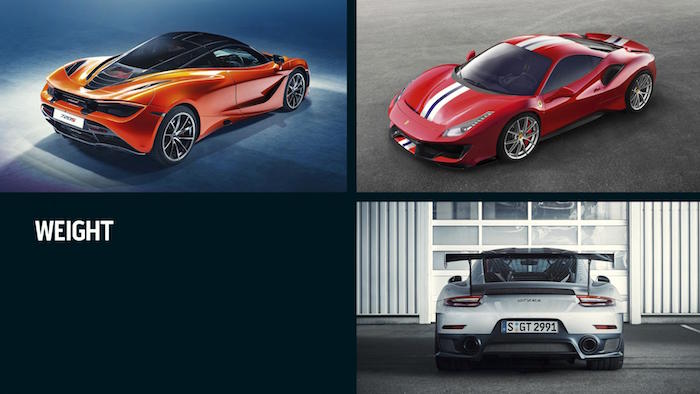
Weight
Phew, what a mental workout that was. How about some easily digestible figures as a respite from complex engineering concepts?
The 720S weighs 1,322kg, which is an outstanding figure for a car with seven gears, eight cylinders, two turbos and the kind of power that can overthrow dictatorships.
However, the 488 Pista is ready to rain on McLaren’s day, offering a 1,280kg kerbweight. That’s a dry weight though, so we’re comparing apples with tangerines.
Dry weights compared, there’s just three kilos in it: 1,280kg for the 488 Pista, and 1,283kg for the McLaren. Talk about benchmarking…
The Porsche, despite a solid diet to prep for its admission into the GT – and RS – club, is still the porkiest at 1,470kg. If you want a carbonfibre-based supercar in the 911 shape, however, you could always put a call in to Ruf. We would, if someone would be so kind as to deliver a truck full of $100 notes to our office.
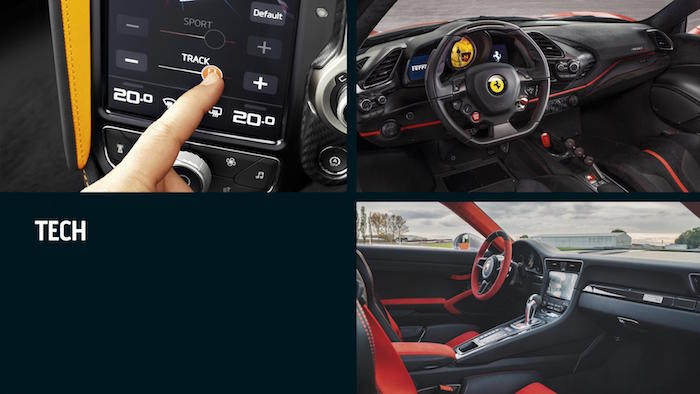
Technology
Oh dear. Brace yourself; we’re right back in the mostly mystifying world of engineering again. But don’t flee just yet – this tech is more Twin Peaks mystifying than Mulholland Drive.
So, let’s start with the 488 Pista. Ferrari’s up to version 6.0 of its Side-Slip Control, which controls the electronically actuated differential, traction control system, magnetorheological suspension and – for the first time – the brake pressure at the calipers.
What this last inclusion means in the real world remains to be seen, but Ferrari’s done a stellar job so far in the 488 of making sure that the tech is a support act, not the main event, and we’ve got our fingers crossed for more of the same.
If we’re unkind, we’d say that the 720S apes the 488 with its variable drift control, which, like the 488, controls the level of oversteer the system lets you get away with before it reins everything back in.
But there is the fact that it’s almost infinitely adjustable, and interacts with the exceptionally complex hydraulic damping setup to make heroes of the ham-fisted. The infographic as you adjust it is pretty cool as well.
The Porsche? Well… it has things like the Porsche Doppelkupplungsgetriebe, which is the Germanic way of referring to a twin-clutch gearbox. And that feels very old-hat all of a sudden.
Okay, we’re being unfair; so much of the tech in the new GT2 RS is going on behind the scences, like turbos that help deliver peak torque at just 2,500rpm and keep the line flat pretty much all the way to the redline, special NACA ducts (yep, like the Ferrari F40) for brake cooling and a revised stability control program.
Not as showy as the McLaren or Ferrari, but that’s kind of Porsche’s modus operandi, no?
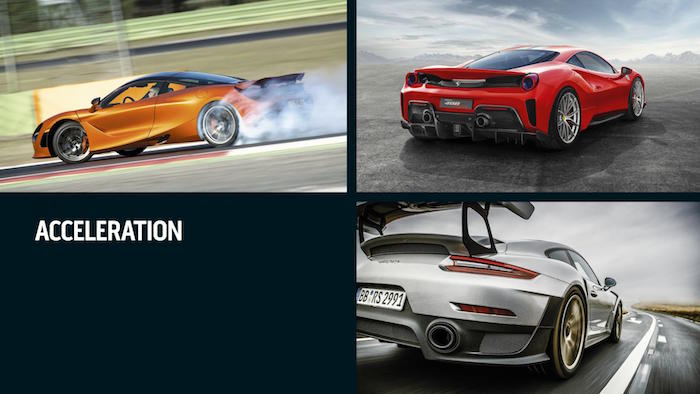
Acceleration
As you’d expect, the combination of 710bhp and 1,322kg makes the McLaren an incredible thing off the line. Zero to 100km/h takes just 2.9 seconds, or just enough time for you to say, “My, that’s actually quite brisk,” and 0-200km/h takes 7.8. Choose the kind of words you’d like to utter in that time.
Consider the 488 Pista, then, to be the ultimate party-pooper. With a 0-100 time of 2.85 seconds (oh yes, we’re splitting hairs here) and a 0-200km/h time of 7.6 seconds, the 720S is now in the unenviable position of playing second fiddle. That is, until the 750S or 745LT, or whatever McLaren’s cooking up over in Woking, retakes the crown with even more absurd numbers.
Don’t discount the GT2 RS, though – it’s alway been a driving powerhouse, with performance figures to back it up. As such, the new GT2 RS delivers 0-100 and 0-200 times of 2.8 seconds and 8.3 seconds – as befits Porsche’s most powerful 911 ever. So, in the GT2 RS, you’d win off the line but fall behind in a proper drag race.
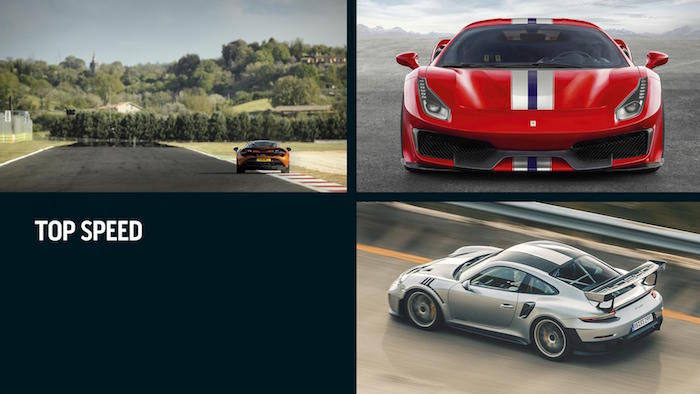
Top speed
But what about the toppiest trump of top trumps – top speed?
Well, the McLaren’s super-slippery body and metric mountain of shove mean that 341km/h is a very real possibility.
Apparently, the GT2 RS’s top speed is electronically limited to 340km/h. We think that’s probably a little bit of poetic licence; it’s unlikely that the sheer volume of air displaced by that huge rear wing and gaping inlets will allow progress beyond 340. If there’s an aerodynamicist among you, please let us know if we‘re wrong.
As for the 488 Pista? Well, Ferrari says its top speed is “more than 340km/h”. So, does that mean 341km/h (i.e. level-pegging with the 720S) or perhaps even 343 and 344km/h?
Um, Ferrari? Want to lend us one so we can find out?
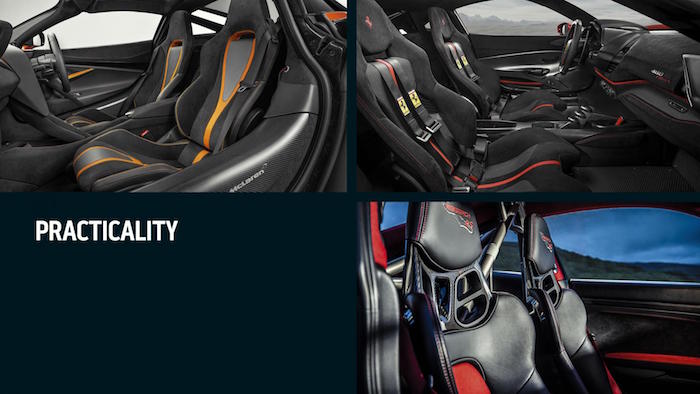
Practicality
How does one quantify practicality, anyway? Simple! With lots numbers.
Well, they all have two seats each, which means you’ll be better off with a Merc V-Class if you need to carry six passengers.
The McLaren has a 150-litre cubby hole up front and another 200-litre boot at the back, which is remarkably practical. Of course, you’ll never fit a chest of drawers in it, but there’s certainly enough space for some soft luggage.
The Ferrari has a 230-litre boot, which is pretty impressive, considering how much else is wedged in there. But we might have to hand it to the McLaren.
As for the GT2 RS? Well, it depends how much you can wedge among the scaffolding behind the seats, we guess. And there’s a 115-litre boot up the front, if you run out of space. Yeah, McLaren wins.
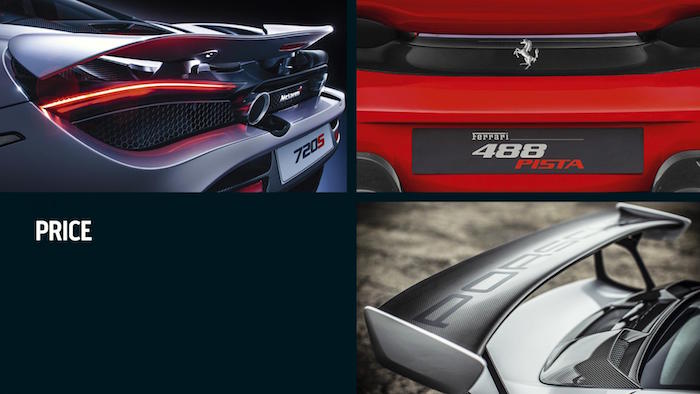
Price
Much. Very much. So much. For the benefit of our readers in Singapore, that's about S$1.1+m for the 720S, est. S$1.3+m for the 488 Pista and... S$1.4m for the GT2 RS with the Weissach Package (S$121k) and no special coloiur, all road-registered and with reasonable options.
STORY Craig Jamieson






